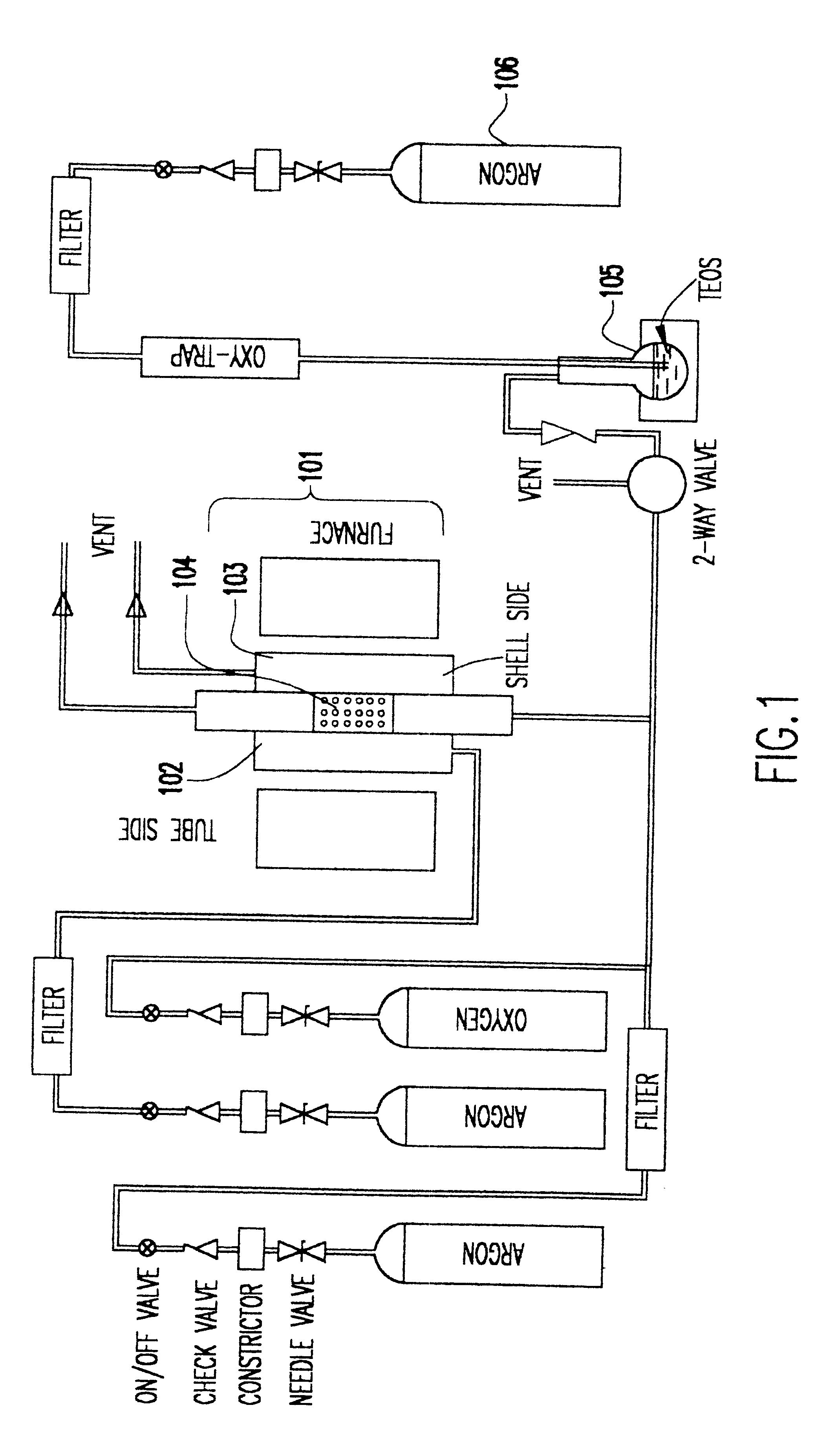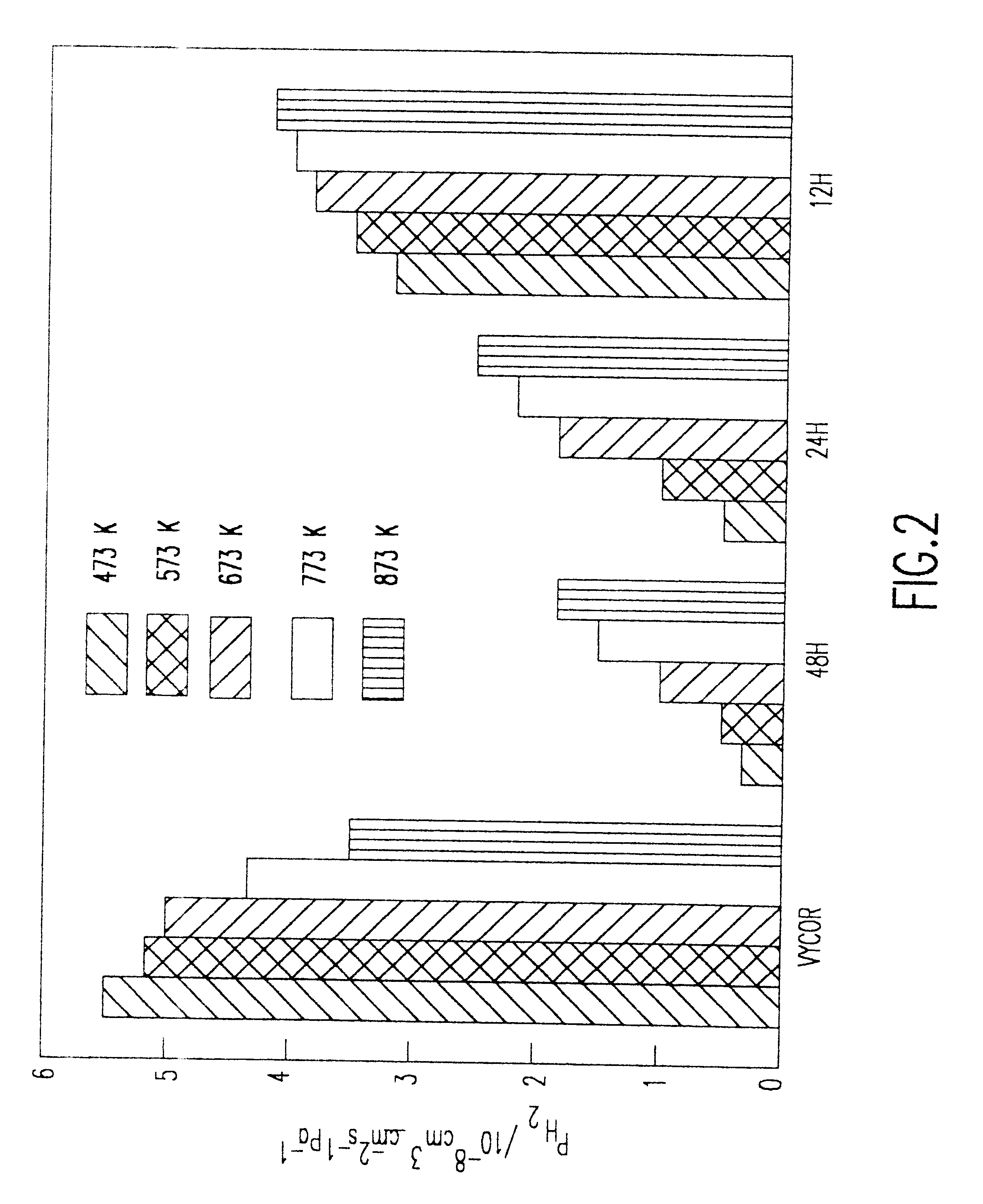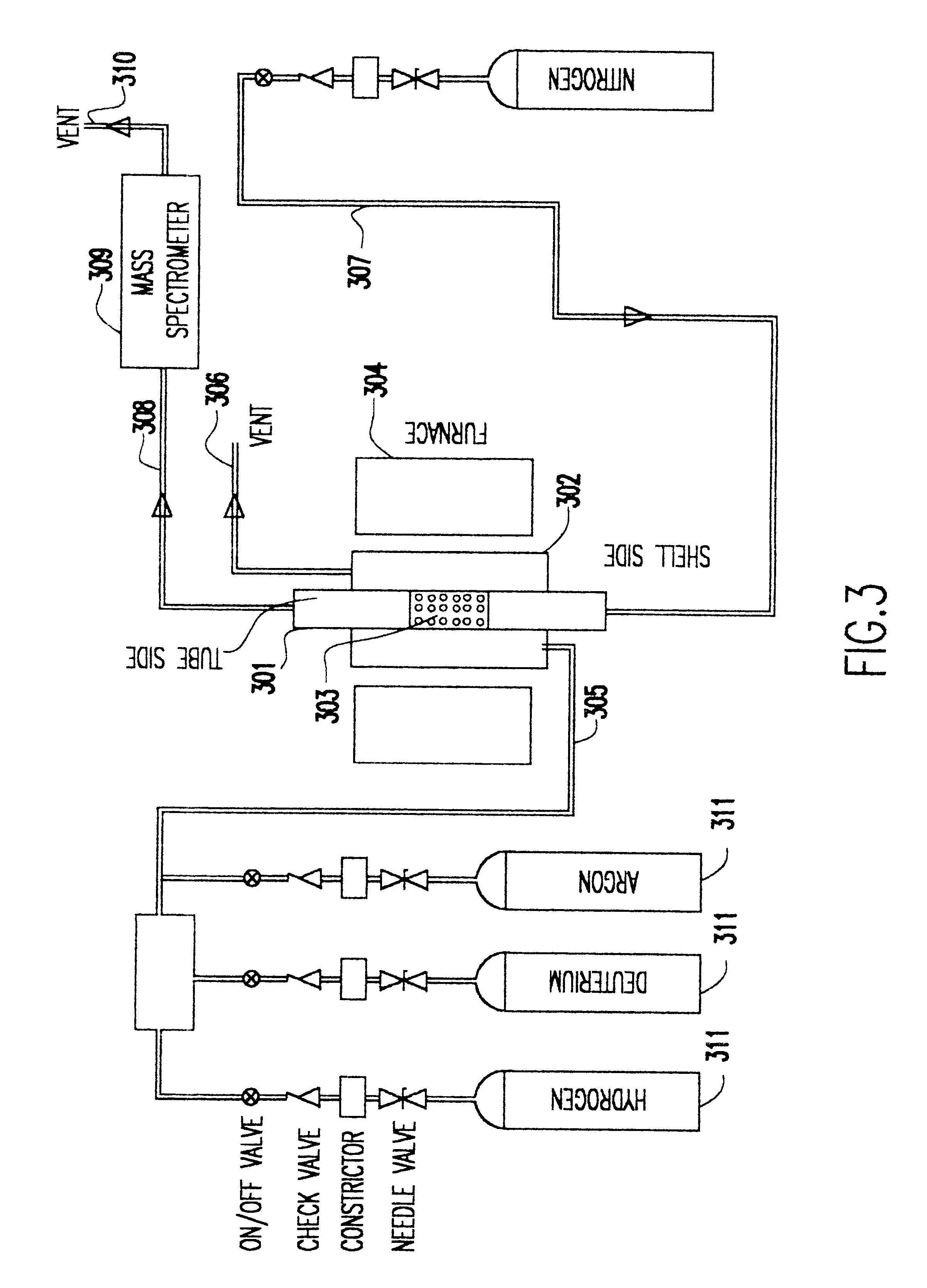Hydrogen-selective silica based membrane
a technology of silica and water, applied in the field of hydrogen generation, purification, recovery, etc., can solve the problems of reduced permeability, inefficient separation mechanism, and inability to meet the requirements of water treatment,
- Summary
- Abstract
- Description
- Claims
- Application Information
AI Technical Summary
Problems solved by technology
Method used
Image
Examples
Embodiment Construction
The Nanosil membrane of the present invention is formed by the deposition of a thin layer of silica in the mouth of the pores of the porous glass substrate. The layer is sufficient to impede passage of species other than hydrogen to the pores.
The Nanosil membrane is prepared as follows: A porous substrate, in this case Vycor glass (Coming 7930 glass), is modified in the experimental setup as shown in FIG. 1. The reactor assembly 101 including tube 102 and shell 103 with a 4 cm porous glass (Vycor) section 104 is heated to 873 K with Ar flow on both the shell (20 .mu.mol s.sup.-1) and the tube (8 .mu.mol s.sup.-1) side. Tetraethyl orthosilicate 105 (TEOS, Aldrich, 98%) is introduced through a bubbler at 298 K using Ar 106 (3 .mu.mol s.sup.-1) as the carrier gas. The stream is premixed with the tube stream Ar before introduction in the tube side. The TEOS-Ar stream is allowed to flow for different time periods (12 h, 24 h, 48 h) after which the reactor is cooled in Ar.
The characterist...
PUM
| Property | Measurement | Unit |
|---|---|---|
| Fraction | aaaaa | aaaaa |
| Fraction | aaaaa | aaaaa |
| Pore size | aaaaa | aaaaa |
Abstract
Description
Claims
Application Information
 Login to View More
Login to View More - R&D
- Intellectual Property
- Life Sciences
- Materials
- Tech Scout
- Unparalleled Data Quality
- Higher Quality Content
- 60% Fewer Hallucinations
Browse by: Latest US Patents, China's latest patents, Technical Efficacy Thesaurus, Application Domain, Technology Topic, Popular Technical Reports.
© 2025 PatSnap. All rights reserved.Legal|Privacy policy|Modern Slavery Act Transparency Statement|Sitemap|About US| Contact US: help@patsnap.com



